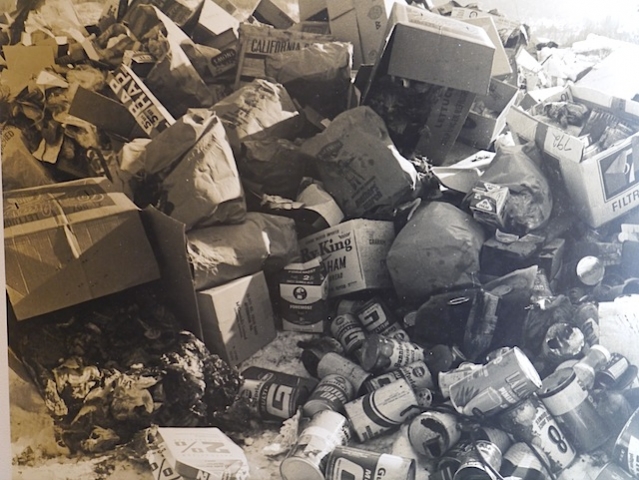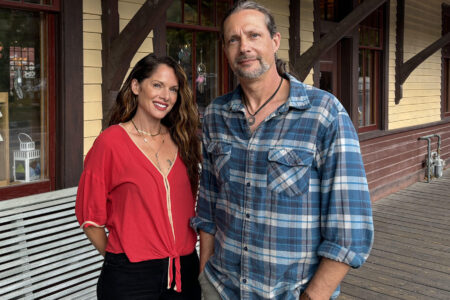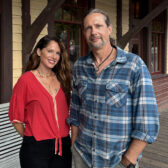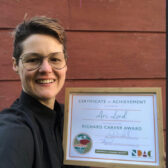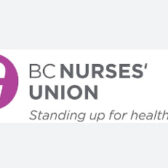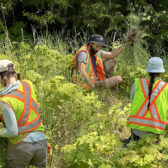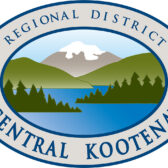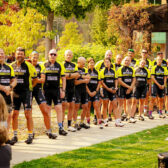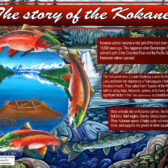Garbage in, garbage out: a quick history of Nelson's waterfront as a waste dump
After the Nelson transfer station moves to Blewett in 2014, the city-owned part of the land on which it sits will be reclaimed to create a park, as envisioned by the city’s Sustainable Downtown Waterfront Master Plan.
The entire lakeshore from Cottonwood Creek east past the mall was used as a dump for garbage and industrial waste for decades until 1982. Although the waste was removed to build the mall parking lot, it’s still there beneath the airport and the transfer station. It is not yet known what will have to be done to remediate the transfer station land before putting a park on it.
Garbage dumped into the lake
The waste was dumped beside and often into the lake. Sometime prior to the 1970s, the city constructed a barrier of old car bodies in the lake (see photo in the gallery below) to keep the garbage from being carried away by the current.
Anyone walking along the lakeshore below the heliport today can see old bottles, cans, and plastic falling out of the cutbank below the dog walk (see photo below). It’s a legacy of the relaxed attitude to garbage that started to change with the beginnings of the environmental movement in the 1970s.
Recycling: a “crazy idea”
“After the first Earth Day in 1970, values changed as people became more conscious and concerned about air and water pollution,” says environmental activist and waste consultant Michael Jessen.
“I believe the raised consciousness in Nelson was a product of the times,” he told The Nelson Daily, “and the concerns raised by the Nelson branch of the Society Promoting Environmental Conservation, and my election to Nelson City Council in 1972.
“I spent my two years on council speaking out against the city’s practices and promoting a recycling and composting alternative. All of this no doubt emboldened the Ministry of Environment to pressure the city to change its practices.
“Although recycling was spreading everywhere across North America at the time, I was considered somewhat crazy for promoting the idea.”
Garbage under a park might be OK
Ron Mikkel, who worked locally for the Ministry of the Environment for nearly 30 years until 2002 and who has worked extensively with local solid waste issues since, says removing the garbage from under the transfer station site for the creation of a park might not be worth the trouble.
“It could cause more problems to dig it up than to leave it,” he told The Nelson Daily. “When you dig it up you break things up. A lot of it was deposited in water and if you break it up and expose it to air it might increase the impact to the lake in the short term.”
Mikkel is the elected representative for Area F of the Regional District of Central Kootenay (RDCK).
He says the Ministry of the Environment has been monitoring the groundwater in the area for 25 years and CP Rail for 20. “We are not aware of any level of impact to the lake. It (the landfill) has been closed since 1982. After 30 years leachate production peaks, then goes down.”
“You would have to renovate it to a standard depending on what the city wants to use it for,” he said. “You would have to do an engineering study to decide whether, for example, to cap it with an impermeable membrane or some other measure.”
What the city wants to use the land for is pretty clear to City Manager Kevin Cormack. “In our downtown waterfront plan, it is a park,” he says.
Jurisdiction? It’s complicated…
The city owns about 60% of the transfer station site and CP Rail owns the rest (on the west end of the site). The RDCK runs the transfer station and is responsible for moving it and for remediating the land if an environmental study deems it necessary. And it’s the RDCK that has to come with a closure plan for the site.
In other words, there is a complex jurisdictional mix. Cormack reports that so far, CP has told the city it is not interested in using its part of the land for a park. That’s were the mound is—a large pile of covered garbage that accumulated in the 1980s while everyone was waiting for a new landfill site to be found (the current site at Salmo, soon to be retired in favour of a new site at Ootischenia near Castleger).
A natural shoreline and fish habitat
Councillor Candace Batycki, who, with Cormack, sits on the committee developing the vision for Cottonwood Creek and the west end of the waterfront, says she would like to eventually see “a natural shoreline, so we are actually creating fish habitat in the shallows. Certainly it would be a place where people could launch a kayak or go for a swim.
“I would like to see it as a place people can go and take their dog,” she said, “and have a picnic, and take their book, and take their family, and just really enjoy being there, and as a place where people can see the bird life and the biodiversity that would be there. I would see it as a combination of recreation and a nature park.
“One day it would be great if there were fish in Cottonwood Creek and we had school groups going and looking at the fish and learning about restoration.”
The Sustainable Downtown and Waterfront Master Plan— the plan that designates the transfer station site as a future park— officially became part of Nelson’s Official Community Plan this spring. The updated version is not available on the city’s website yet.
Related stories in The Nelson Daily
Artist Brent Bukowski intalls his Baker Street Bridge Railing (Video)
New Corridors to the Waterfront
Composting has low priority in local waste management plans


